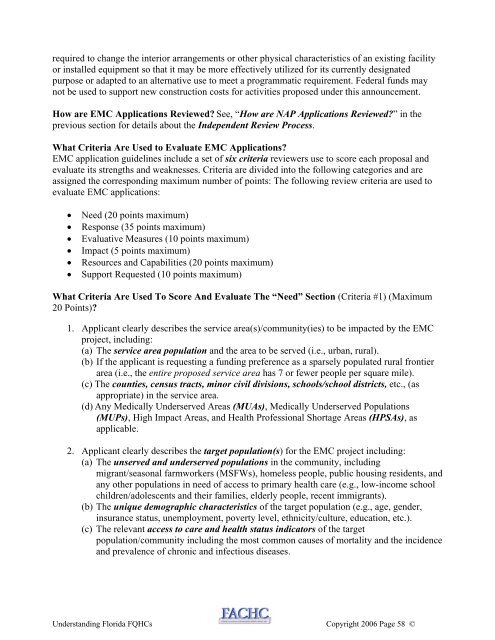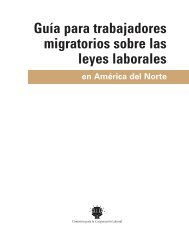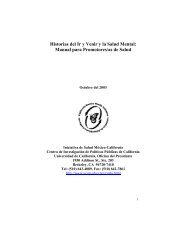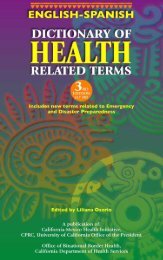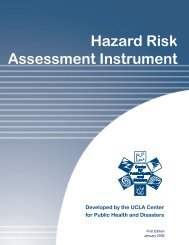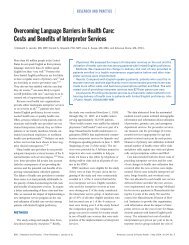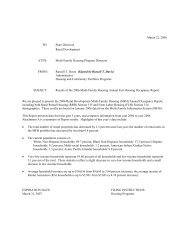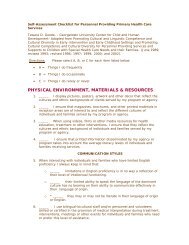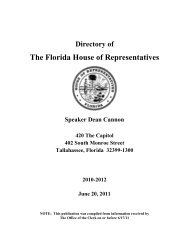Guide to Understanding Florida's FQHCs and 330 Expansion ...
Guide to Understanding Florida's FQHCs and 330 Expansion ...
Guide to Understanding Florida's FQHCs and 330 Expansion ...
You also want an ePaper? Increase the reach of your titles
YUMPU automatically turns print PDFs into web optimized ePapers that Google loves.
equired <strong>to</strong> change the interior arrangements or other physical characteristics of an existing facility<br />
or installed equipment so that it may be more effectively utilized for its currently designated<br />
purpose or adapted <strong>to</strong> an alternative use <strong>to</strong> meet a programmatic requirement. Federal funds may<br />
not be used <strong>to</strong> support new construction costs for activities proposed under this announcement.<br />
How are EMC Applications Reviewed See, “How are NAP Applications Reviewed” in the<br />
previous section for details about the Independent Review Process.<br />
What Criteria Are Used <strong>to</strong> Evaluate EMC Applications<br />
EMC application guidelines include a set of six criteria reviewers use <strong>to</strong> score each proposal <strong>and</strong><br />
evaluate its strengths <strong>and</strong> weaknesses. Criteria are divided in<strong>to</strong> the following categories <strong>and</strong> are<br />
assigned the corresponding maximum number of points: The following review criteria are used <strong>to</strong><br />
evaluate EMC applications:<br />
• Need (20 points maximum)<br />
• Response (35 points maximum)<br />
• Evaluative Measures (10 points maximum)<br />
• Impact (5 points maximum)<br />
• Resources <strong>and</strong> Capabilities (20 points maximum)<br />
• Support Requested (10 points maximum)<br />
What Criteria Are Used To Score And Evaluate The “Need” Section (Criteria #1) (Maximum<br />
20 Points)<br />
1. Applicant clearly describes the service area(s)/community(ies) <strong>to</strong> be impacted by the EMC<br />
project, including:<br />
(a) The service area population <strong>and</strong> the area <strong>to</strong> be served (i.e., urban, rural).<br />
(b) If the applicant is requesting a funding preference as a sparsely populated rural frontier<br />
area (i.e., the entire proposed service area has 7 or fewer people per square mile).<br />
(c) The counties, census tracts, minor civil divisions, schools/school districts, etc., (as<br />
appropriate) in the service area.<br />
(d) Any Medically Underserved Areas (MUAs), Medically Underserved Populations<br />
(MUPs), High Impact Areas, <strong>and</strong> Health Professional Shortage Areas (HPSAs), as<br />
applicable.<br />
2. Applicant clearly describes the target population(s) for the EMC project including:<br />
(a) The unserved <strong>and</strong> underserved populations in the community, including<br />
migrant/seasonal farmworkers (MSFWs), homeless people, public housing residents, <strong>and</strong><br />
any other populations in need of access <strong>to</strong> primary health care (e.g., low-income school<br />
children/adolescents <strong>and</strong> their families, elderly people, recent immigrants).<br />
(b) The unique demographic characteristics of the target population (e.g., age, gender,<br />
insurance status, unemployment, poverty level, ethnicity/culture, education, etc.).<br />
(c) The relevant access <strong>to</strong> care <strong>and</strong> health status indica<strong>to</strong>rs of the target<br />
population/community including the most common causes of mortality <strong>and</strong> the incidence<br />
<strong>and</strong> prevalence of chronic <strong>and</strong> infectious diseases.<br />
<strong>Underst<strong>and</strong>ing</strong> Florida <strong>FQHCs</strong> Copyright 2006 Page 58 ©


